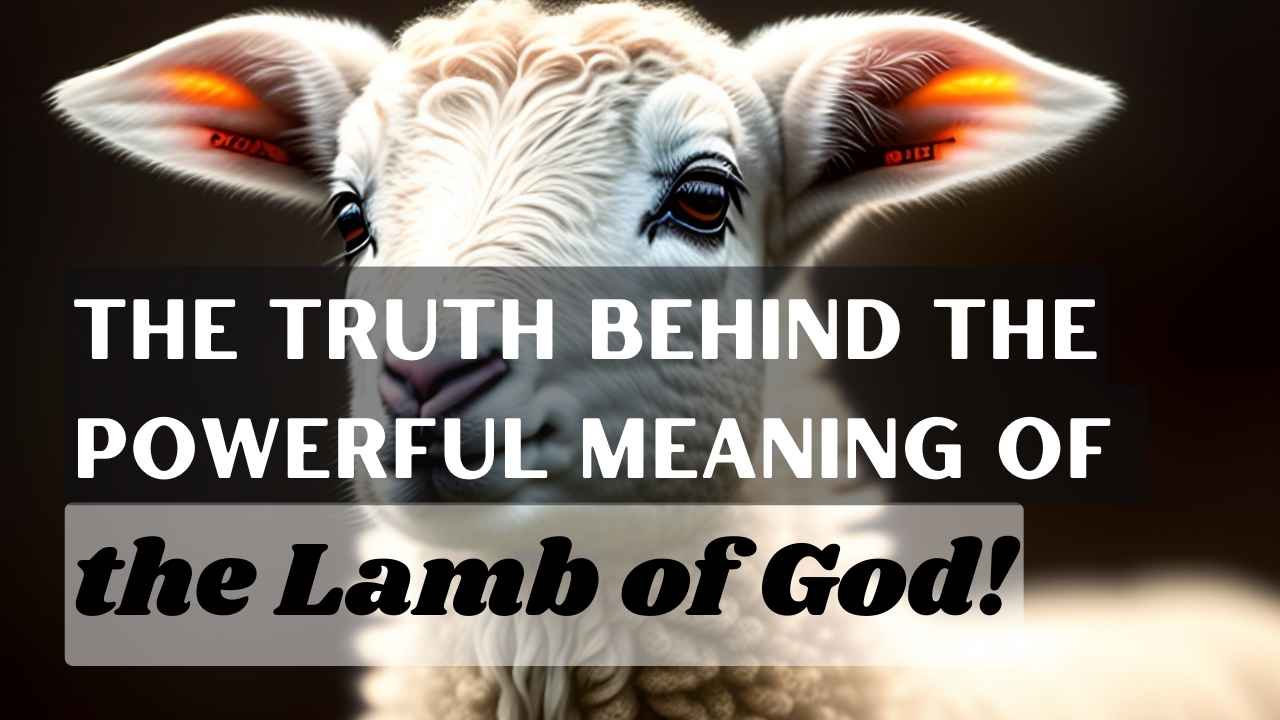Welcome to our channel, where we explore the beauty and wonder of religious art and symbols. Today, we’ll be talking about one of the most powerful and significant symbols in Christianity: The Lamb of God.
Here, “take over” can be translated as “Clean it up” or “Remove”. John the Baptist is said to be “the lamb of God who removes the sins of the world” or “the lamb who removes the sins of the world.”
Young sheep can be interpreted in three ways. Isaiah 53 portrays Jesus as a troubled servant in the Bible. John the Baptist could have imagined a troubled young lamb when he called Jesus a young lamb of God in this tradition.
Furthermore, the Passover lamb cannot be ignored in Israel’s history. While thinking of a little lamb on Passover, John the Baptist may have compared Jesus to a little lamb.
As a result of Jesus’s death on the cross, we have been given a new Exodus experience. Last but not least, the winning lamb is drawn in the Book of Revelation. As John the Baptist portrays the suffering young sheep, the Passover young sheep, and the winning young sheep, he understands the Lord.
Seeing Jesus’ suffering and death on the cross as events that remove sins from the world, John the Apostle understood that Jesus’ suffering and death were events that removed sins from the world. According to John the Apostle, Jesus’ hardships and death were victories and not defeats as a young sheep, according to the Book of Revelation. According to John, Jesus’ death on the cross was not a failure or a defeat. It is the death of Jesus that saves us, and in the end, it is the death of victory that creates a new world.

By the death of the cross with the Holy Spirit, the Lord, the young lamb of God, has triumphed over sin. Through faith in the winning lamb, Christians participate in the victory of the Lord. The winning lamb has given us eternal life. A little lamb will give this baptism.
Since centuries, the Lamb of God, or Agnus Dei in Latin, has represented the sacrifice of Jesus Christ. Millions of people around the world hold a special place in their hearts for this symbol. Jesus’ sacrifice is symbolized by the lamb, a gentle and innocent creature.
Sculptures, paintings, and stained glass windows have all depicted the Lamb of God throughout history. It is often depicted holding a banner with the Latin inscription “Agnus Dei,” which translates to “Lamb of God.” As stated in the New Testament, John the Baptist said that Jesus was “the Lamb of God who took away the sin of the world.”
God’s Lamb symbolizes the ultimate act of love and sacrifice, reminding us of Jesus’ incredible gift of salvation. There is no doubt that the Lamb of God is one of the most powerful and significant symbols in Christianity, whether we view it with awe or simply find comfort in its peaceful and serene presence.
That’s all for today’s video. Thank you for taking the time to learn about the Lamb of God and its rich history. I hope you enjoyed the video about religious art and symbols, and please don’t forget to like, comment, and subscribe for more.





